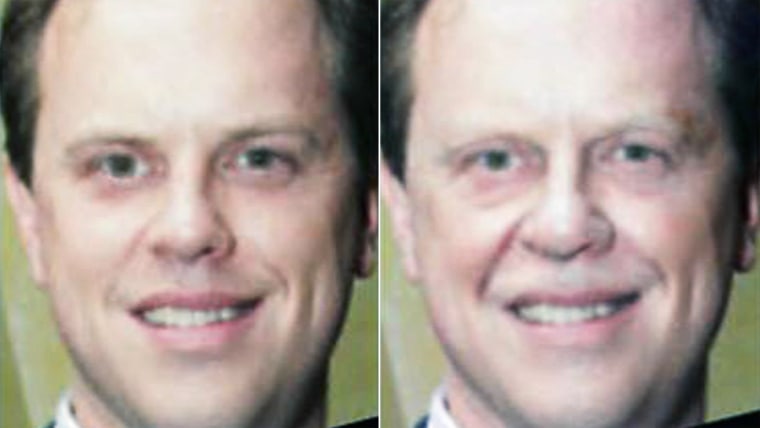In only 30 seconds, with a single photograph and a new software program, you could see what you will look like up to age 80.
The software, developed by computer and engineering researchers at the University of Washington, changes the structure of the face and it is the first program to be able to take a photo of a 3-year-old child and age it through adulthood, according to computer scientist Ira Kemelmacher-Shlizerman.
TODAY anchors got a glimpse of their 60 year-old selves Monday. “It not only alters the person’s images but it changes your actual facial features, TODAY anchor Natalie Morales said. "It changes the shape of your face, not just adding that sprinkle of gray in the hair or the wrinkles.”
Natalie, Al Roker, Willie Geist and Tamron Hall got a glimpse of their 60-year-old selves.

"Ooh! The nose got smashed. I get hit in the face with a frying pan, apparently, somewhere between now and 60, said anchor Willie Geist.
The program accurately ages faces by comparing an original photo to a variety of faces found online— there are faces of both men and women from birth to age 80, which are separated by age and gender. For example, if someone wants to age a 3-year-old girl to be a 25-year-old woman, the software looks at the facial structures of both the 3-year-old’s photo and compares it to all 25-year-old female photos, altering the facial features, such as the size of the eyes, length of nose, width of mouth, in a way that matches how the original girl looked.
“It finds correspondence between one photo of one face to any other face,” she said.
Aging children’s faces can be difficult because kids often make odd facial expressions and strike goofy poses. It may be cute when kids mug for the camera, but can make it hard to translate into an adult face. And, children under 3 still possess baby features, making it tough to predict future features.
“[For very young kids] the nose is really small, the eyes are rounder, and the mouth is fuller mouth … it is much harder to change the facial features of babies below 3-years-old because the shape [of the face] changes,” Kemelmacher-Shlizerman said.

The age-progressing tool could help provide more accurate images of missing people, with law enforcement agencies already expressing interest in the software, he says. Currently, PhotoShop is used to show the aging effects of an abducted child. For adults, the existing software just adds some wrinkles and gray.
The researchers created 82 automated images of people who had corresponding real photographs of themselves as they aged. They then asked random people to pick which photos were real and which were computer generated. People selected the computer-rendered photos as often as the real ones —they were almost indistinguishable.
The researchers were surprised people couldn't tell real from fake.
“We didn’t think that every transformation would ... produce such a result,” Kemelmacher-Shlizerman said.
Beyond law enforcement, the software could also have an impact on plastic surgery and facial reconstruction.
“The goal is to make people look very natural and often we’ll go back and look at a photo of a person as a young person to meet that,” said Dr. Melissa Piliang, a dermatologist at the Cleveland Clinic. “If you could look at a projected natural aging for a patient that might help you plan a treatment or intervention to keep them more natural.”
She believes this type of software could encourage people to avoid habits that cause harsh aging, such as quitting smoking or tanning.
Piliang thinks the coolest thing about the software is it can provide a peek into the future. “I think everybody’s curious that about what they will look like as they age.”